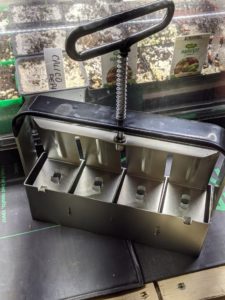Why does my catnip (nepeta cataria) smell like low-grade lemon balm? To add to my confusion, they look nearly alike.
I’ve discovered that the various catnip plants growing around my yard smell different.
For example, the potted plants I picked up at a nursery have a faint skunk-like odor, which intensifies when dried.
On the other hand, seed grown catnip have a faint minty-citrusy scent. I’ve observed that the minty scent intensifies in catnip grown in-ground versus container-grown catnip. Or maybe I’m just imagining it.

I had forgotten I had dumped some potting soil laced with catnip seed in my flower bed and the seedlings emerged between the perennials, well protected by its taller neighbors. Catnip is supposedly a mint relative, but I can’t attest to its invasiveness. I am waiting to see if this colony will survive the winter and spread during the warm seasons.
A side-by-side comparison displays how catnip can be easily confused for lemon balm: look for the fine hairs on catnip leaves and the golden hue on lemon balm leaves. Here’s an article enumerating the differences.
Regardless of the smell, my cats still react the same way to the skunk-odor catnip and the mint-scented catnip. Here’s Conan going after the mint-scented variety.
It’s not difficult for the cats to distinguish between catnip and lemon balm. The cats have a habit of destroying catnip plants whenever they are in reach, so identification is easy usually in the aftermath. As a result, I have elevated the potted catnip plants and take cuttings to hand out to the catkids.
A takeaway from all this is to label your seeds and cuttings!






















